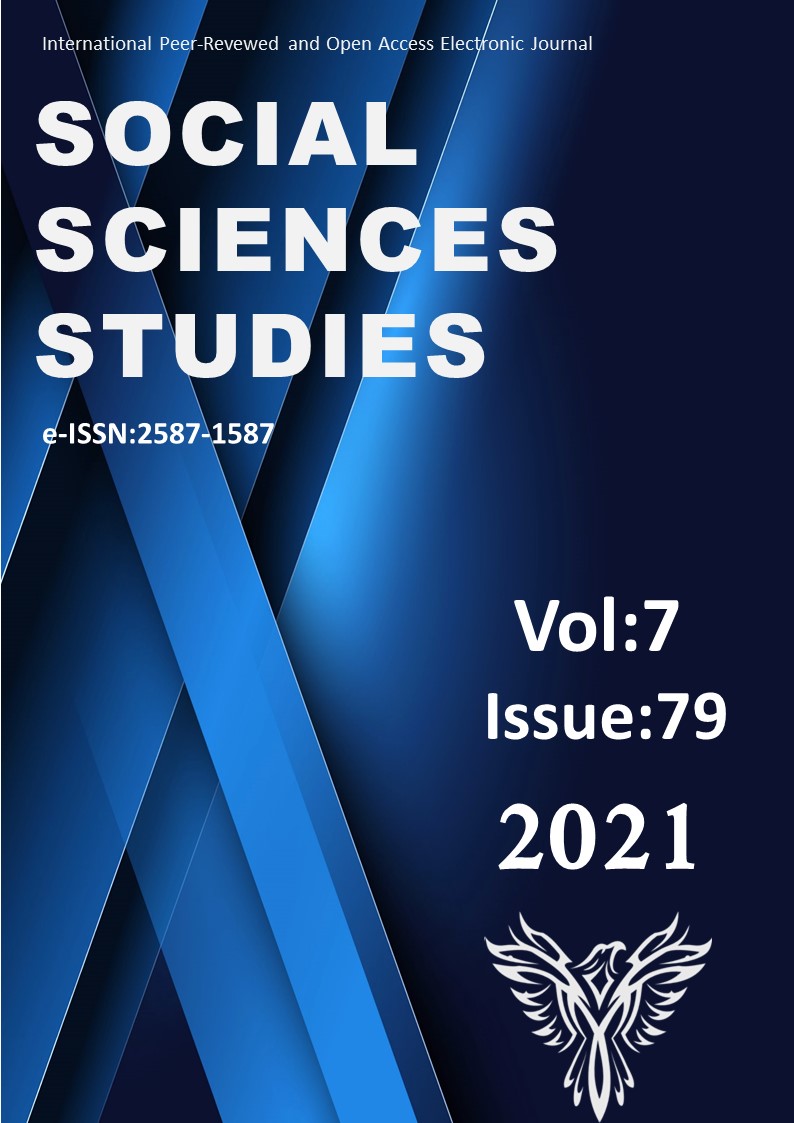Author :
Abstract
İsim + yardımcı fiillerle kurulu birleşik fiillerin durum ekli tamlayıcı tercihleri üzerine temellendirilen bu çalışmada kullanılan metin 15-16. yüzyıl arası döneme aittir. Bilhassa 15. yüzyıl sonlarının Osmanlı Türkçesine geçiş sürecinin idrak edildiği bir dönem sayılması eseri, barındırdığı söz varlığı yönüyle mühim kılmaktadır. Ayrıca içerdiği söz dizim örnekleri, ilgili dil evresini tanıklama bakımından değerlidir. Çalışmada amaçlanan isim + yardımcı fiillerle kurulu birleşik fiillerin yönetimindeki cümle yapılarında biçim ve anlamca tayin edilmiş durum ekli tamlayıcılara dair dönemsel görünümler ortaya koyabilmektir. Bu tür söz dizimi unsurlarının ekli durum tamlayıcı tercihleri ve bu durum ekleri arasındaki görev aktarımları hususu her dil dönemi için inceleme gerekliliği kabul görmüş bir gerçekliktir. Yazma esere Türkiye Yazma Eserler Kurumu aracılığıyla ulaşılmıştır. Nazım ve nesir türünde metinlerin bulunduğu eserde veri taraması orijinal nüshadan okumalar ile yapılmıştır. Okuma sürecinde yüklemi isim + yardımcı fiil şeklinde kurulu cümle/yan cümleler tespit edilmiş; bunlar çeviri yazı tekniğiyle kaydedilmiştir. Doküman analizi yöntemiyle ele geçen bulguların ait oldukları bağlam içinde aktarılmış; bilinmeyen kelime anlamları ekserî dipnot uygulamasıyla açıklanmıştır. Günümüz Türkçesinden uzaklaşmış kelime karşılıkları söz öbeği içinde belirtilmiş; söylem çözümlemesinde somutlaştırma adına bazen şiir cümleleri düz cümle dizilimiyle sıralanmıştır. Yüklemi isim + yardımcı fiil birleşikleriyle oluşmuş temel-yan cümlelerde görevli durum ekli tamlayıcılar üzerine yapılandırılmış incelemede, dönem ve sahaya yönelik araştırmalara veri sağlama önemsenmiş; böylece dönemlere, dil sahası ve yöresel kullanımlara göre değişkenlikler gösteren ekler arası işlev aktarımına başkaca somutlamalar yapma istenilmiştir. Bu tür çalışmalar ile Şüphesiz tarihî metinler üzerine düşünülmüş biçimsel-anlamsal boyutlu söylem analizleri dönem, saha, ağız kullanımlarına göre beliren özellik tespitlerini zenginleştirecektir.
Keywords
Abstract
This study is based on compound verbs with noun + auxiliary verb form and their choices of complementary case suffixes. The text in hand is from 15th-16th century. 15th century is thought as a transition period into ottoman-turkish and therefore text's language is important in terms of its vocabulary since this is a transition period text. In addition syntax of the text is also valuable since it is a witness to the related language stage. The aim of the study is to put forth periodical perspectives about the sentences with compound verbs and complementary case suffixes that are determined in terms of meaning. The manuscript was acquired from Manuscript Institution of Turkey. The text includes verse and proses within itself and the data scanning of the text has been through readings from the original script. During the stage of reading, sentences/clauses with verbs in the form of noun + auxiliary verb have been determined and these have been recorded with transcript method. Data acquired from the text scan have been delivered with its contexts and the unknown vocabulary are usually explained with endnotes. Meanings of the words that are distant from today’s Turkish are given in the phrases; in order to give the concrete expression some of the sentences of verses are given in the prose form. In this study, which is based on compound verbs with noun + auxiliary verb form and their functioning complementary case suffixes, it was deemed important to sustain data for the researches on the field and the period. By this way it was aimed to illustrate the transfer of the functions of suffixes according to periods, language fields and local use. It can be said without a doubt that stylistic-semantic analysis on historical texts will accelerate the recordings of the characteristics of the practices according to periods, fields and dialects.
